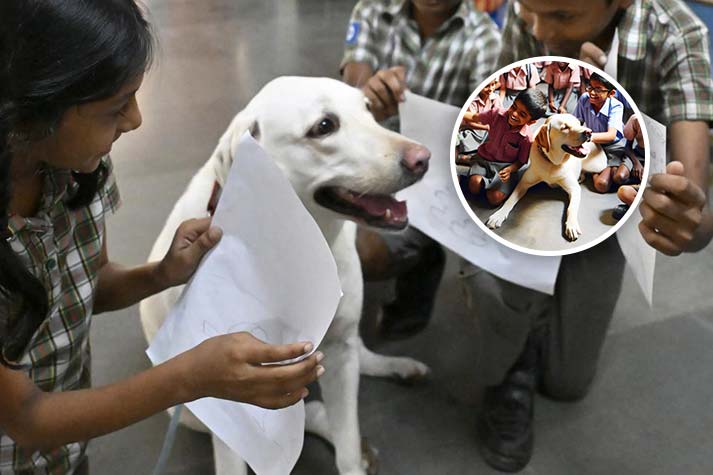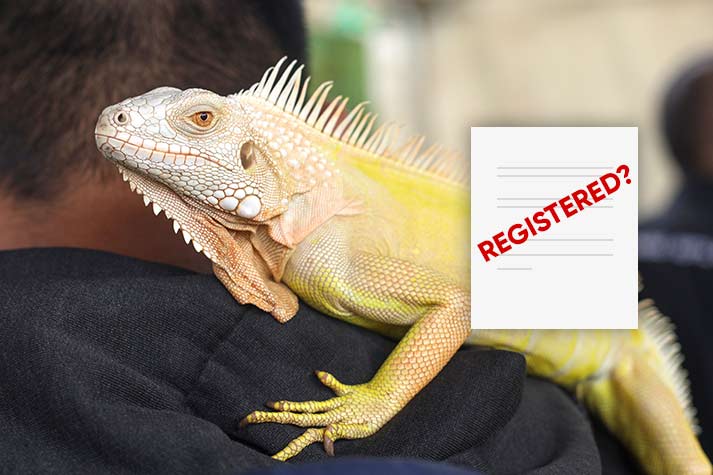
22 Apr
A Dog-tor at Work: How a Chennai School Uses Canine Therapy for Children with Special Needs
Chennai: Children with learning disabilities, autism, and dyslexia often face unique hurdles, both in the classroom and in everyday social settings. At Saraswati Kendra, those challenges are met with an unconventional yet deeply effective ally: animal-assisted therapy. Here, therapy dogs help the children grow emotionally and socially, offering not just companionship but a subtle form of instruction.
Enter Rinku, the school’s beloved Dr. Dog for the past two years. The moment she pads into the therapy room, tails wagging and nose twitching, the atmosphere shifts. The children light up. She strolls around the room, greeting each child in her own canine way.
“What does Rinku like?” a psychologist asks. “Biscuit,” one student responds. “But are biscuits healthy? No!” the children reply in chorus.
It is in these small, seemingly simple exchanges that the real therapy takes place. Rinku becomes a non-threatening bridge, guiding children to speak, learn, and engage with the world around them.
According to Ms. Krishna, Saraswati Kendra was the first school in India to introduce pet therapy back in 1996. Things truly took off in 2001, when Jill Robinson, founder of the Animals Asia Foundation, visited the school. She trained the staff on how to evaluate therapy dogs and interact with them in a therapeutic setting. Ms. Krishna took those lessons to heart and has since made animal-assisted therapy a core part of the school's approach.
Each Dr. Dog session lasts around 40 minutes and is tailored for one or two children at a time. All therapy dogs are rescues adopted by Ms. Krishna, who personally evaluates them for traits like calmness and sociability; crucial traits when working with children.
“The dogs must be at least two years old,” she explains. Only sterilised dogs earn the title of “doctor.”
Over the years, several dogs (both Labradors and mongrels) have served as Dr. Dog. Labradors, known for their friendly nature, are a natural fit. But Ms. Krishna is quick to add, “Mongrels are actually very well-behaved dogs.”
So, how exactly does a dog become a therapist? Not through formal training, but through presence, patience, and instinct. The dog serves as a gentle conduit for communication, especially for children on the spectrum who may have gone silent.
“For children on the spectrum who suddenly stop speaking, we use Dr. Dog to gently encourage them to talk, like saying, ‘Dr. Dog had curd rice. What did you have?’” says S. Niraja, the school’s chief psychologist. She notes that dogs are especially attuned to emotional cues, sometimes even before they’re expressed aloud. “They develop a soul connection.”
Therapy is not a one-size-fits-all process. Children are selected based on their individual needs and their ability to bond with the dog. Over time, this bond fosters confidence, responsibility, and emotional openness.
“The Dr. Dog makes them feel important, like someone needs them in their life,” Niraja explains. For children with ADHD who tend to be hyperactive, therapists cleverly use the dog to redirect their energy. “The dog is tired and wants to sit,” they say; and the children, wanting to stay close, sit along with them, eventually calming down themselves.
There is even a thoughtful approach to concluding therapy. The process begins by asking a child if they are okay with “sharing” Dr. Dog with another student. If the child agrees, a new child is introduced to the sessions, ensuring that the original child still feels valued. “We make sure the first child still feels important,” Niraja adds. Peer interaction is encouraged, and over time, therapy naturally winds down as the child becomes more socially comfortable.
Sometimes, the impact of this bond surfaces in unexpected moments. During one session, children were asked to write about Rinku. One child penned, “Rinku is a happy dog.” Another wrote, “Rinku best friend is Maya.” The second sentence caught everyone’s attention. Maya, another therapy dog on campus, had indeed been spending time with Rinku. The observation was small but meaningful, a sign that the child was not only participating but connecting, observing, and interpreting their environment.





AUTHOR’S BIO
Carry My Pet
Passionate pet enthusiasts and globetrotters, dedicated to easing furry friends' journeys worldwide. Penning tales of compassion at CarryMyPet, where every relocation is a tail-wagging adventure.